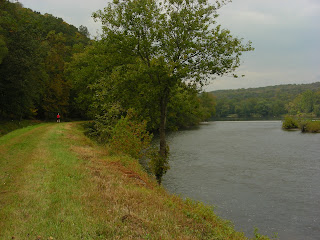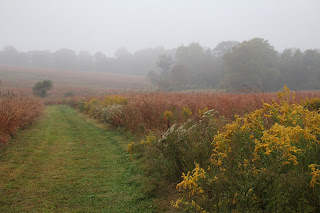Fall colors in the meadows and grasslands are definitely on the wane, but the seeds of the common milkweed (Asclepias syriaca) are bursting forth from their split, dried pods.
Darkness is coming on so soon now (7:15 p.m.) that Kali and I have to walk before dinner. So, last Friday evening immediately after work we completed a short traverse of the grasslands and found that one of the pods had scattered its seeds in a cluster. The seeds got hung-up in some of the grasses instead of floating off across the landscape. Either the wind eventually carried them off, or the weekend's rain dropped them onto the soil. In either case, next year we hope there will be more milkweeds to feed the Monarch caterpillars.
Some milkweeds in the fields are still mostly green (though showing unmistakable signs of senescence). I checked them for late Monarch caterpillars but found none. Our local Monarch Waystation tender says that she's still finding caterpillars on some of her milkweeds, but suspects that they won't be able to metamorphose in time to escape the frost.







































